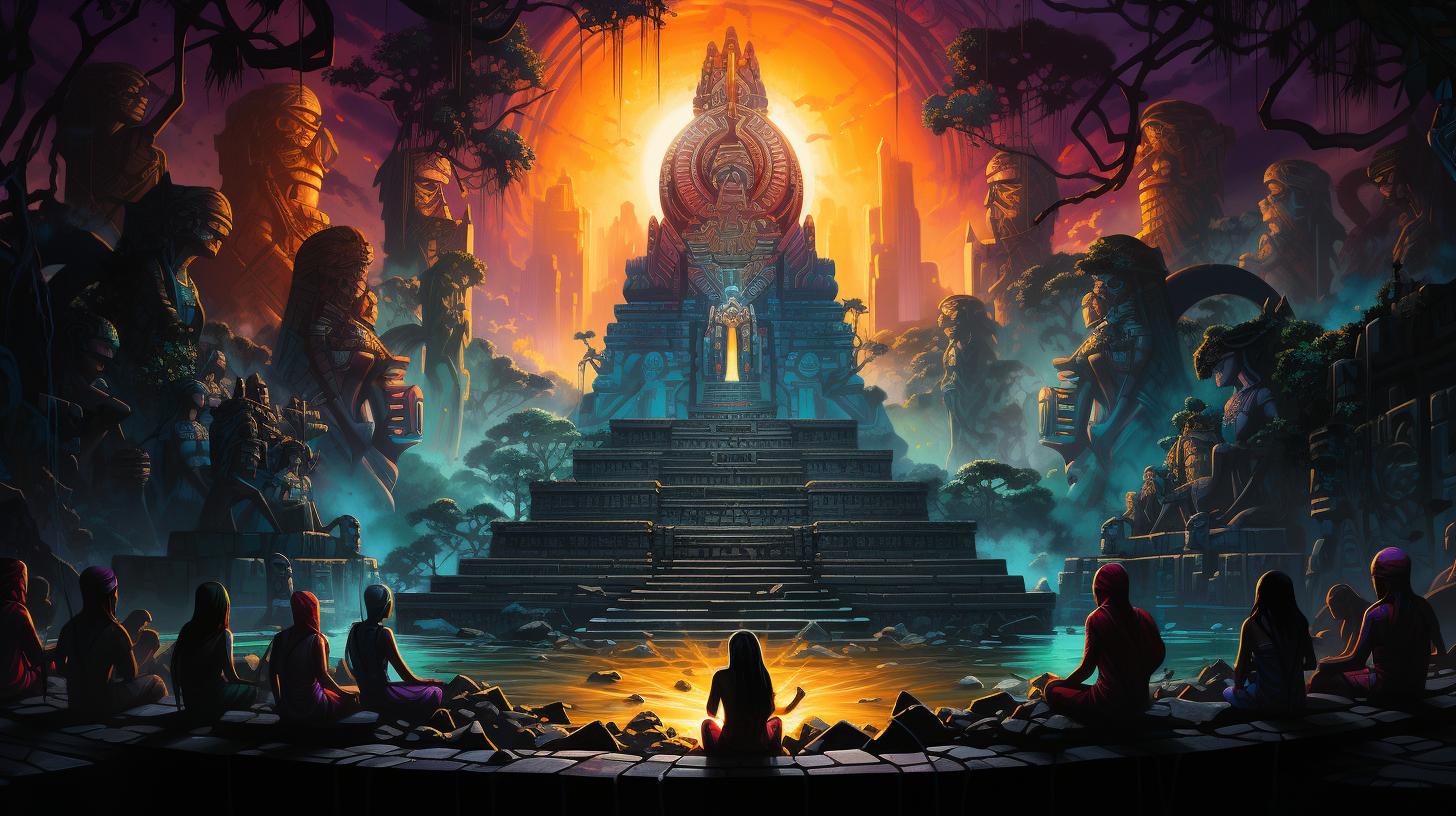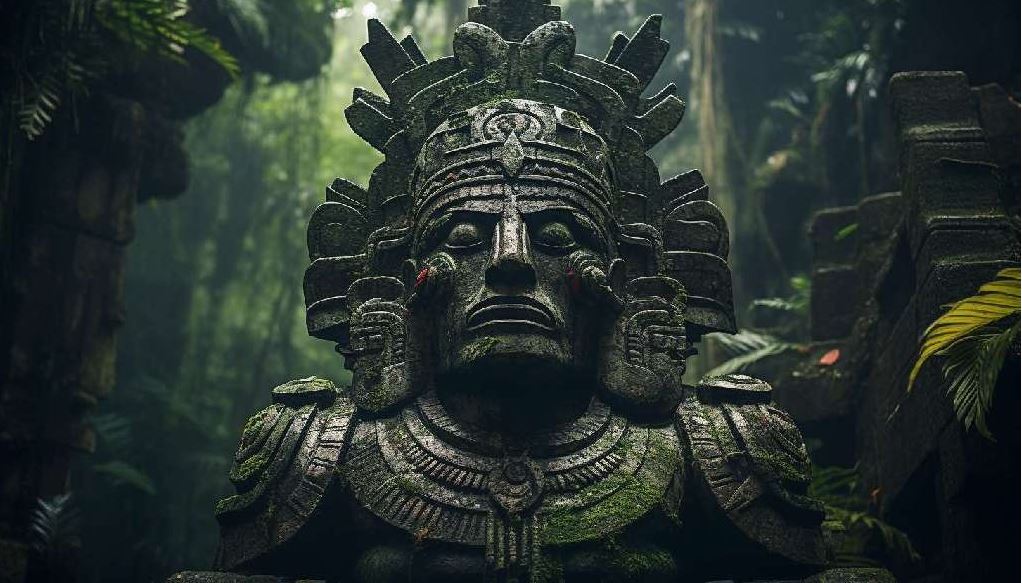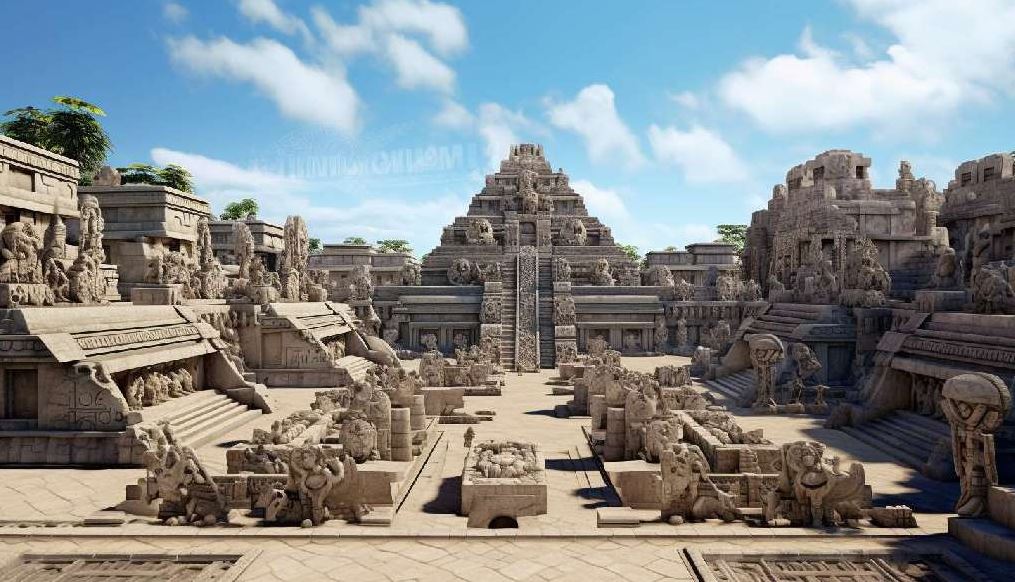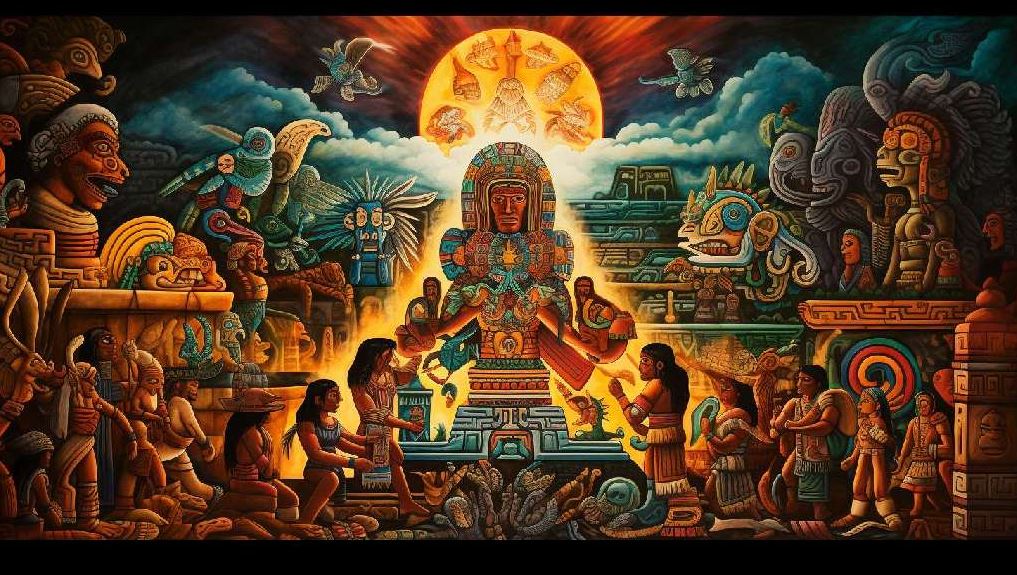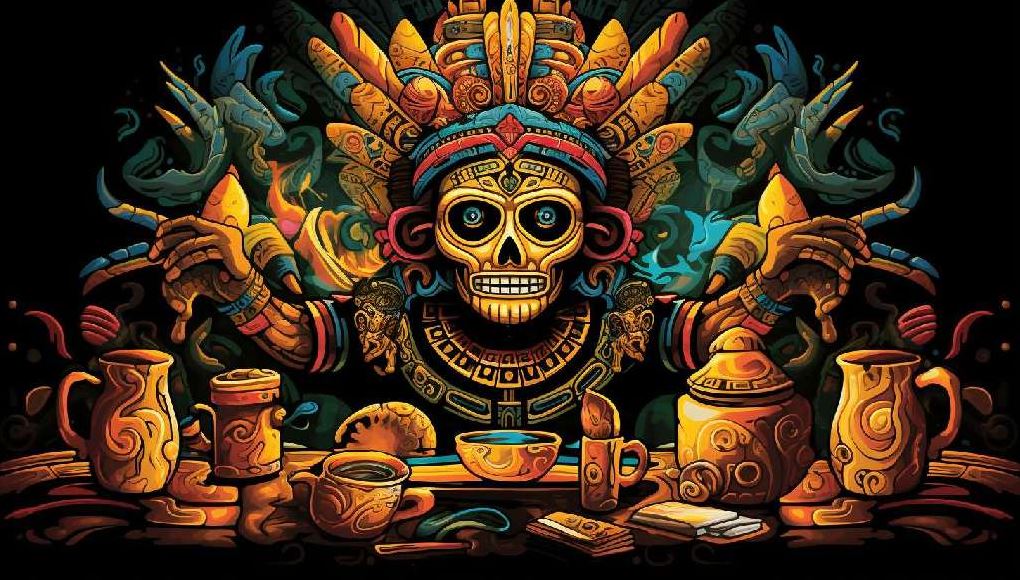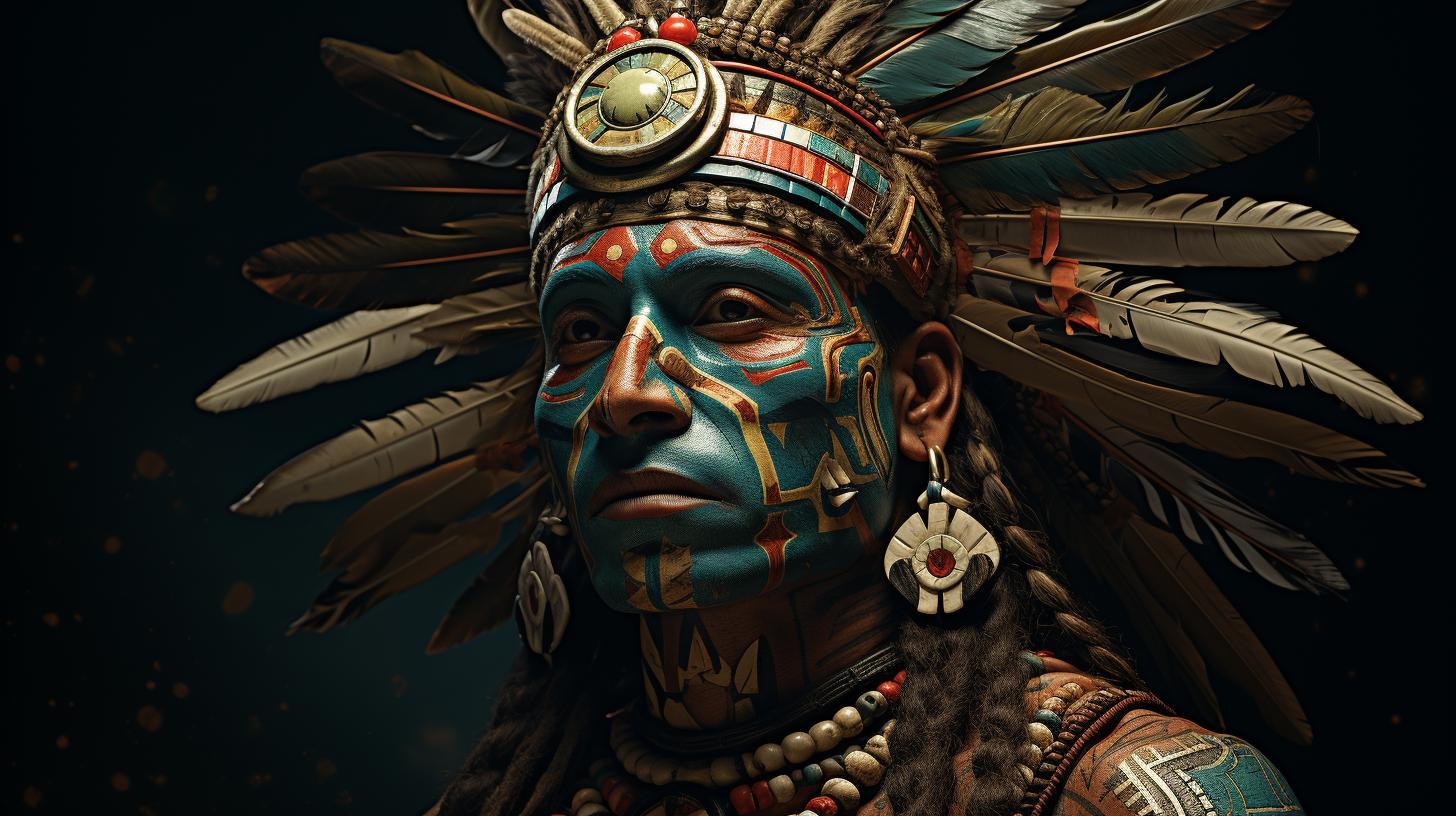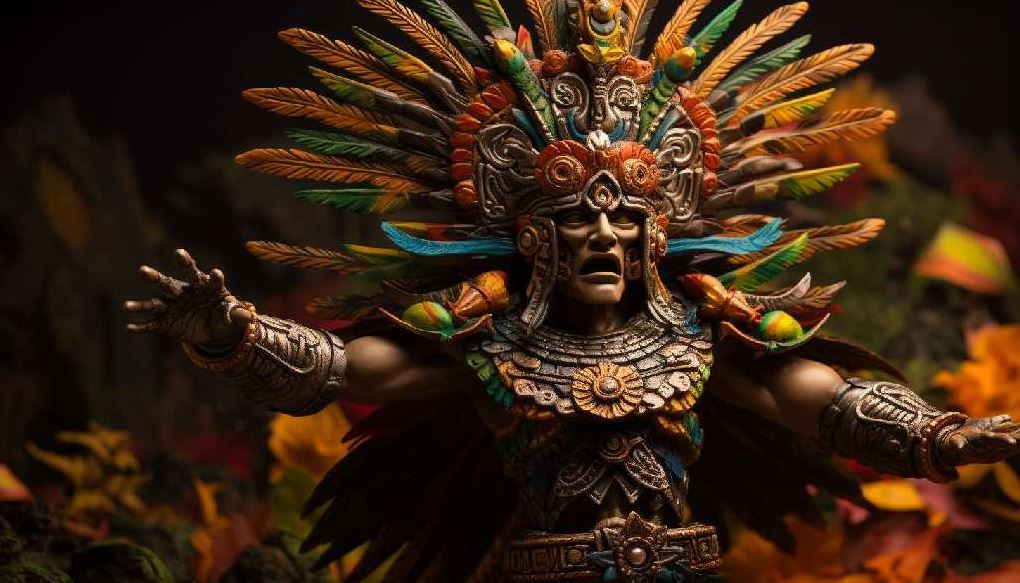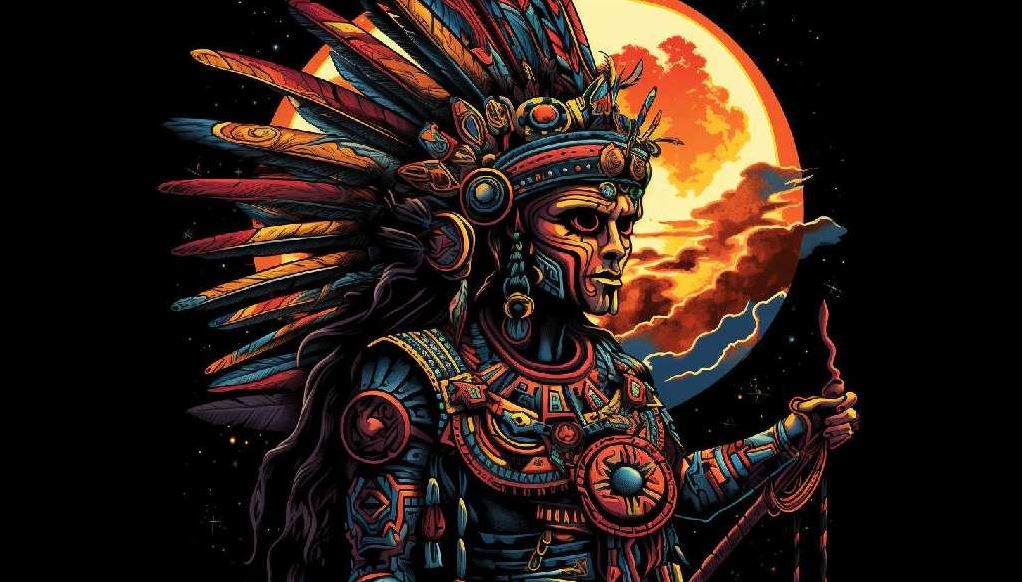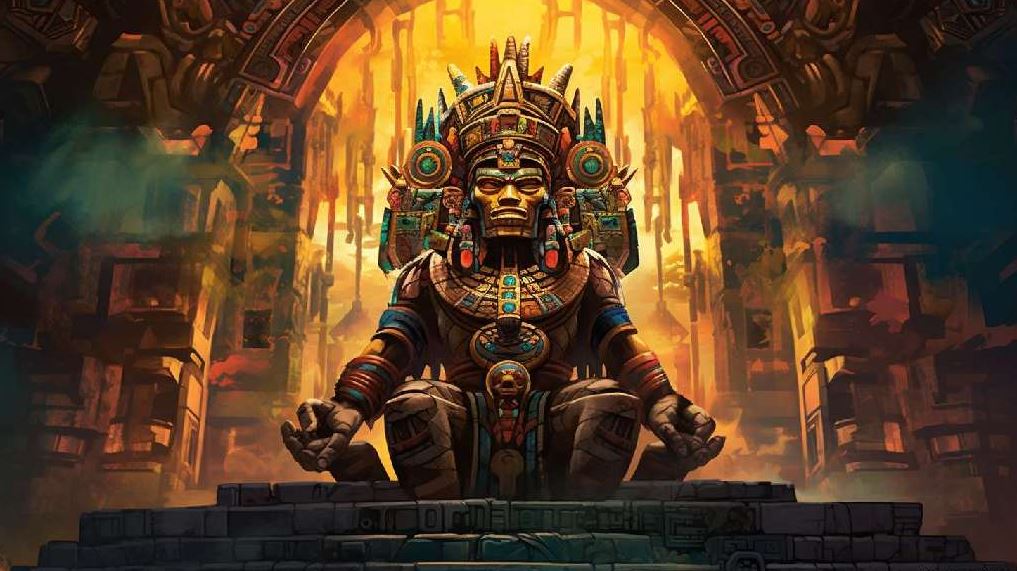Why Did the Aztecs Practice Human Sacrifice: Uncovering the Ancient Aztec Rituals

The Aztecs, an ancient civilization in Mesoamerica, practiced human sacrifice as a significant part of their religious beliefs. These sacrificial ceremonies involved opening the chests of victims to offer their still-beating hearts to the gods.
The Aztecs believed that these rituals were necessary to maintain spiritual and cosmic balance, appease their sun god Huitzilopochtli, and display their power and dominance. Alongside human sacrifice, they also engaged in ritualistic cannibalism, considering it an honor.
This article explores the reasons behind Aztec human sacrifice, their cultural traditions, and the connection between sacrifice and warfare.
The Aztecs: An Overview
The Aztecs were an ancient civilization that thrived in Mesoamerica, specifically in what is now present-day Mexico. This overview delves into the historical background of the Aztecs as well as their culture and society, providing insight into the context in which their practice of human sacrifice emerged.
Historical Background
The Aztec civilization, also known as the Mexica, originated in the 14th century. They established their capital city, Tenochtitlan, on an island in Lake Texcoco. Over time, the Aztecs expanded their empire through both conquest and diplomatic alliances, creating a vast and powerful dominion in the region.
Aztec Culture and Society
The Aztecs developed a complex and sophisticated culture. They were accomplished artisans, creating intricate artworks, beautiful pottery, and elaborate featherwork. Their society was highly stratified, with a ruling class composed of nobles, priests, and warriors, while commoners engaged in farming, trade, and crafts.
Religion played a central role in their daily lives, shaping their beliefs, rituals, and societal norms.
The practice of human sacrifice was deeply intertwined with Aztec culture and held immense religious significance. It represented a form of devotion to the gods, an offering to maintain spiritual balance and cosmic harmony.
Understanding the Aztecs’ historical background and the dynamics of their culture and society is crucial to comprehending the intricate reasons behind their participation in human sacrifice.
Aztec Religious Beliefs and Practices
Aztec religion played a crucial role in their society, with sacrifice occupying a central position in their religious practices. Understanding the importance, significance, and rituals surrounding sacrifice provides insight into the beliefs and rituals of the Aztec civilization.
Importance of Sacrifice in Aztec Religion
Within Aztec religion, sacrifice held immense spiritual significance. It was believed that through sacrifice, the Aztecs could maintain cosmic balance and appease the gods. Sacrifices were seen as offerings to ensure the favorable continuation of the world and sustain the divine forces.
The act of sacrifice was perceived as essential for the well-being and survival of the entire community.
Significance of Human Sacrifice
Human sacrifice, specifically, held great importance among the Aztecs. The belief was that the gods needed the most precious and valuable gift, which was the human life force, to sustain themselves and the world.
By offering human lives in sacrifice, the Aztecs aimed to provide sustenance and energy to the deities. This act was seen as a necessary sacrifice for the greater good of society and believed to strengthen the cosmic equilibrium.
Rituals and Ceremonies Surrounding Sacrifice
The Aztecs developed elaborate rituals and ceremonies around sacrifice. These ceremonies often coincided with significant dates in the Aztec calendar, aligning with specific religious festivities. Sacrificial rituals involved opening the chests of victims, removing their still-beating hearts, and presenting them as offerings to the gods.
These rituals were carried out in the temples, where towers of skulls and giant racks of human skulls served as a grim testament to the magnitude of the sacrifices performed.
Throughout their religious practices, the Aztecs placed a high emphasis on sacrifice, especially human sacrifice, as an integral part of appeasing the gods and maintaining the balance between the spiritual and physical realms.
Understanding the religious beliefs and complex rituals surrounding sacrifice sheds light on the complexities of Aztec culture and their interconnectedness with the divine forces that governed their lives.
Reasons for Aztec Human Sacrifice
The practice of human sacrifice held profound significance for the Aztecs, rooted in their spiritual and cultural beliefs. This section explores the reasons behind the Aztec tradition of human sacrifice, shedding light on their worldview and motivations.
Spiritual and Cosmic Balance
For the Aztecs, human sacrifice was seen as a means to maintain spiritual and cosmic balance. They believed that their gods relied on these blood offerings to sustain the harmony of the world.
By sacrificing humans, the Aztecs believed they were satisfying the divine hunger for vital life force and ensuring the continued well-being of their civilization.
Worship of Huitzilopochtli, the God of Sun and War
Huitzilopochtli, the Aztec god of the sun and war, held a central role in Aztec religious beliefs. The Aztecs viewed him as their patron deity, guiding and protecting their empire.
Human sacrifice was performed as an act of devotion and service to Huitzilopochtli, aiming to keep him appeased and maintain his favor. The Aztecs believed that without these sacrificial offerings, their world would descend into chaos and destruction.
Intimidation and Display of Power
In addition to its spiritual significance, human sacrifice served as a means to intimidate and display the power of the Aztec empire. By showcasing their ability to capture and sacrifice individuals, the Aztecs demonstrated their dominance over conquered peoples.
The towering racks of skulls and terrifying rituals struck fear into the hearts of their enemies, solidifying Aztec control and dissuading potential uprisings against their rule.
Aztec Cannibalism: Ritualistic Aspects
Within Aztec culture, cannibalism held a significant place as a ritualistic tradition. It was not only accepted but also considered an honorable practice, closely associated with their religious beliefs and ceremonies.
Cannibalism as a Cultural Tradition
For the Aztecs, cannibalism went beyond mere sustenance. It was deeply rooted in their cultural traditions and served as a way to commune with the divine. Consuming the flesh of sacrificial victims was believed to establish a spiritual connection with the gods and enhance their own spiritual power.
Furthermore, cannibalism was seen as a means to absorb the qualities and attributes of the sacrificed individuals. By consuming the flesh, the Aztecs believed they were assimilating the strength and bravery of their victims, thereby strengthening themselves both physically and spiritually.
Offering Human Body Parts as Gifts
In addition to the ritualistic consumption of human flesh, the Aztecs would also offer body parts of the sacrificed victims as gifts. These gifts were often presented to influential members of the community or esteemed individuals, symbolizing honor and respect.
For example, the heart of a sacrificial victim was highly prized and frequently given as a special offering. The heart was believed to be the essence of life and the seat of the soul, making it a sacred and powerful gift.
Other body parts, such as limbs or organs, were also offered as gifts to express gratitude, establish alliances, or strengthen social bonds within the Aztec society.
Overall, Aztec cannibalism served as a sacred practice deeply intertwined with their religious beliefs, enabling them to connect with the gods, acquire spiritual power, and reinforce social relationships through the exchange of symbolic gifts.
Relationship between Sacrifice and Warfare
The Aztecs’ practice of human sacrifice intertwined with their warfare traditions, as battles provided a source of sacrificial victims. This section explores the role of battles in providing sacrificial victims and the training aspects within the Aztec warrior culture.
Role of Battles in Providing Sacrificial Victims
Battles served as an avenue for capturing prisoners who would become sacrificial victims. Aztec warriors aimed not to kill their enemies but to capture them alive, ensuring a steady supply of victims for religious ceremonies.
The prisoners of war were subjected to gruesome sacrificial rituals, reinforcing the Aztecs’ spiritual beliefs and solidifying their power.
By engaging in warfare, the Aztecs saw themselves as participating in a cosmic battle where victory meant maintaining spiritual balance and harmony within their society. The captured enemies were seen as offerings to the gods, ensuring their favor and the continuation of the world.
Training Aspects and the Warrior Culture
Warfare held immense significance in Aztec society, and the young Aztec warriors underwent rigorous training from an early age. This training aimed not only to hone their combat skills but also to instill discipline, loyalty, and a deep sense of duty towards the empire.
Aztec warriors were regarded as noble defenders of their people and were praised for their bravery in battle. The expectation of attaining glory through warfare motivated the warriors to display extraordinary courage and feats of valor, enhancing their chances of becoming esteemed members of society.
- Warriors underwent physical conditioning and combat training, including weapon mastery and tactical knowledge.
- They were taught the importance of obedience, loyalty, and sacrifice for the greater good of the empire.
- Warriors participated in mock battles and military rituals to simulate real combat scenarios, preparing them for the brutality of war.
The connection between sacrifice and warfare further reinforced the central role of human sacrifice in Aztec culture.
By capturing enemies in battle, the Aztec warriors fulfilled their duty to provide sacrificial victims, ensuring the continuation of their religious practices and maintaining their strength as a dominant empire in Mesoamerica.
Perspectives on Aztec Human Sacrifice
Aztec Views on Sacrifice and Afterlife
The practice of human sacrifice held deep spiritual significance for the Aztecs, connecting them to their gods and their beliefs about the afterlife. They believed that sacrificing humans served as an essential act of devotion and maintained cosmic balance.
The Aztecs saw the act of sacrifice as a selfless and necessary offering for the betterment of humanity as a whole. As a result, individuals chosen for sacrifice were considered privileged, with their deaths seen as a pathway to an elevated existence beyond the earthly realm.
Spanish Accounts and Present-Day Archaeological Evidence
Spanish conquistadors and explorers such as Hernán Cortés and Bernal Díaz del Castillo documented the Aztec practices of human sacrifice, providing vivid descriptions of the ceremonies and their brutality. These firsthand accounts prove crucial in our understanding of this ancient practice.
Additionally, recent archaeological discoveries have unearthed further evidence, validating the historical descriptions. Towers of skulls, giant racks of human skulls, and sacrificial altars have been found, supporting the claims made by the Spanish and further reinforcing the prominence and extent of Aztec human sacrifice.
In conclusion, the Aztecs’ perspective on human sacrifice stemmed from their deeply-rooted spiritual beliefs and their desire to maintain cosmic harmony. Sacrifice was viewed as a selfless act of devotion and an honorable path to an elevated afterlife.
Spanish accounts and archaeological findings have only served to confirm the existence and magnitude of these sacrificial rituals. Understanding the Aztec perspectives on human sacrifice is essential for comprehending the complexities of their culture and religious practices.
Final Thoughts: Understanding the Aztec Practice of Human Sacrifice
The Aztec practice of human sacrifice remains a complex and intriguing aspect of their civilization. Through an examination of their culture, religious beliefs, and historical accounts, we can begin to grasp the motivations behind this extraordinary phenomenon.
As we have explored, human sacrifice held deep spiritual significance for the Aztecs. It was not merely a grotesque act of violence, but rather a means to maintain spiritual and cosmic balance.
By offering human lives to the gods, they believed they were fulfilling their duty to ensure the survival of the world.
Central to this practice was the veneration of Huitzilopochtli, the sun god and the god of war. The Aztecs believed that regular sacrifices were essential to appease Huitzilopochtli and maintain his favor.
By providing him with live hearts, they believed they were nourishing the sun’s energy and ensuring the continuity of life and prosperity.
The display of power and intimidation cannot be ignored when examining Aztec human sacrifice. The towering racks of skulls and gruesome scenes served as a reminder of the empire’s dominance and authority.
Through these rituals, they aimed to instill fear in potential enemies and solidify their control over the territories.
Another aspect often overlooked is the ritualistic cannibalism associated with human sacrifice. The Aztecs considered consuming the flesh of the sacrificed victims as a way to absorb their divine energy and strengthen their own connection with the gods.
This act was not seen as barbaric but rather as a deeply ingrained cultural tradition.
Furthermore, the relationship between sacrifice and warfare was interconnected in Aztec society. The battles fought in the Wars of Flowers provided a consistent supply of victims for sacrifice. These battles also served as a form of training and initiation for young warriors, highlighting the integral role of warfare in the Aztec civilization.
It is crucial to acknowledge that different perspectives existed regarding Aztec human sacrifice. While the Spanish conquistadors were appalled by these practices, the Aztecs themselves viewed sacrifice as a noble act and an honor bestowed upon the victims.
These sacrifices, along with death in battle, were believed to lead to a privileged afterlife.
As we reflect on the Aztec practice of human sacrifice, it becomes evident that it was deeply rooted in their cultural traditions and religious beliefs. It was seen as a necessary obligation to maintain spiritual equilibrium and demonstrate unwavering devotion to the gods.
Without fully comprehending their worldview, it is challenging to pass judgment or reduce their customs to mere savagery.
Ultimately, the practice of human sacrifice by the Aztecs poses profound questions about the intersection of religion, power dynamics, and cultural norms. Exploring these complexities provides us with a deeper understanding of the Aztec civilization and invites us to ponder the broader human capacity for faith, sacrifice, and the search for cosmic harmony.
…

